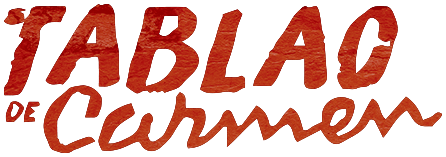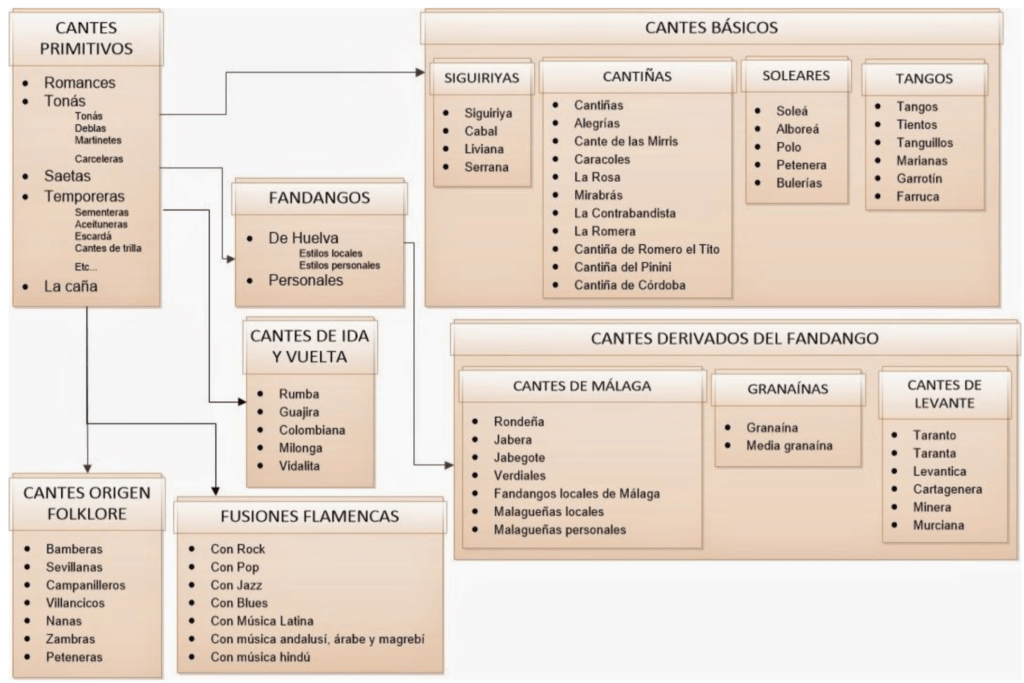Definition of the “palo flamenco”
The language of the flamenco world has its own, unique words, and “palo” is one of them. Flamenco artists and people in the flamenco world use this word constantly, assuming that everyone understands its meaning. However, “palo” in the context of flamenco is not what it means in everyday, Spanish-language usage. It refers to a type of musical category.
In the dictionary of the Royal Spanish Academy, “palo flamenco” is defined as “each one of the varieties of flamenco song”.
The “palo flamenco” defines the rhythm, structure and time signature of the music in question, whether it be for singing, playing or dancing.
The etymology of the word could be associated with the standard card deck, which is divided into four different “palos”, protagonists of the game, responsible for defining the rest of the game.
Another important connotation is the quality of the word, its function: the “palo”, or stick, is used as an instrument one hits. The sound of a stick being used to hit is also called a “palo”. Flamenco uses the most appropriate term to identify the differences between musical varieties. Therefore, the “palo” is what defines and distinguishes everything.
The different “palos flamencos”
It is not our intention to delve into such a broad topic as is the universe of the “compás” and all the different “palos” in flamenco. However, we are inclined to help those who are curious to understand what it is that differentiates one “palo” from another.
In order to do this one must have in mind the time signature of the music; that is, the rhythm and beats. There are “palos” of two, three, four or twelve beats.
Another important marker in a “palo” is the location of the downbeat.
Yet another way to make out the type of “palo” is the structure of the lyrics being sung and the rhyming scheme of the verses, and even the lyrics themselves.
In a “tablao”, a space dedicated to flamenco dance, the most practiced “palos” tend to be the following:
- soleá
- alegría
- tarantos
- seguiriya
- farruca
- fandangos de Huelva
- tientos
- caña
- bamberas
- bulerías
In groups of amateur singers or at flamenco festivals, on the other hand, one is likely to hear other “palos”, not intended for dance, interpreted only with guitar and voice. Some of these are
- tonás
- martinetes
- cantes de trilla
- peteneras
- vidalitas
An accurate list of “new palos” can be found at comando taranta
How are “palos” organised?
“Palos” can be categorised in many different ways, depending on what the criterion is for the classification: time signature, geographic origin, verse structure… The most common is geographic origin, meaning which “palos” derive from which others. There are many versions of the “genealogical tree of flamenco singing”. .
Nowadays, the most widely accepted version is that of José Blas Vega.
On our part, relying primarily on Vega’s version and putting together our common sense and wider reading, the tree would look like this:
The “palos” of a flamenco tablao
When one arrives at a tablao, the expectation tends to be that of seeing a dancer, man or woman, dance to the “compás” of a guitar, with singers and “palmeros” (those who clap their hands to the beat) behind.
In a traditional, orthodox tablao, the flamenco group, or artistic ensemble, is presented at the same time, with everyone together on the stage. There is no group dance or choreography. The dances are individual.
After the dance of one interpreter come the other dances. This is where the concept of the “palo” is relevant, because it distinguishes one dance from another.
At the Tablao de Carmen, the show consists of a minimum of three dances and a musical performance. This last one tends to be to “bulerías”, a lively “palo” with a lot of energy, a “compás” very characteristic of “flamenco”. The three “palos” most commonly danced during the rest of the show are the “soleá”, “alegría’ and “tarantos”
- The “soleá” is a classic “palo flamenco”, very emotional, the name of which comes from the word “soledad”, meaning loneliness: it is sad music, introspective and nostalgic.
- The “alegría” reflects the personality and character of the land where it was born”: Cádiz, “the joy of the port”, good humour and optimism, the grace and impetus of the sun on the sea and the people of Cádiz.
- In the “tarantos”, one hears the anguish, pain and suffering of the mining region. The songs of the mines represent the agony of the work there, without light or hope, only death and misery.
Every day, at the Tablao de Carmen, we have two shows. The artists are the same at every session, but they alternate between “palos”.
This note is accompanied by one of our artists’ sheets, where each dancer is assigned daily the “palo” they must interpret, and each time it ends in a “fin de fiesta por bulerías”!
“Palo s flamencos” are what fill a tablao.
The Tablao represents them and keeps them alive.

